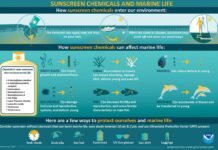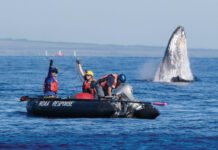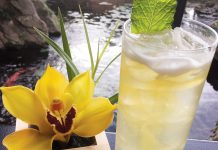Where Will the Water Go?
Through its subsidiary East Maui Irrigation, A&B controls access to seventy-four miles of tunnels, ditches, inverted siphons, and flumes with a capacity of 455 million gallons of water per day. As it phased out cane, A&B restored water to seven East Maui streams — though not enough to quell complaints by environmental groups and taro farmers.
“A lot of water will go back to the streams,” says Mayor Arakawa, who sees his office as a key player in the fluid but vital water game. He’s been negotiating with A&B to create a new 1,000-acre agricultural park where farmers can lease small plots to test central valley conditions. Other than that, Arakawa said last October, “We’re in a holding pattern. We have to determine what’s going to happen.”
Reaching out to Ranches
Ranching on cane land? HC&S has been quick to pursue the idea of irrigated, cropped pastureland where cattle can be “finished” in high style. Rick Volner says that the company is open to working with all the ranches. Maui Cattle Company, a partnership of six major island ranches, seems to be the pioneer — “seems,” because as of October the concept was still so new that Alex Franco, president of Maui Cattle Company, declined to make a statement. Volner was willing to mention “a few thousand acres” and “miles and miles of fencing” for starters.
“As long as the land stays in productive agriculture,” he adds.
Fiber and Fuel
Last July, industrial hemp, though still federally banned, got a boost from the State of Hawai‘i. Senate’s Bill 2659 established a hemp pilot program for “academic and agricultural research.” Kelly King, cofounder and vice president of Pacific Biodiesel, is eager to grow this crop for its many uses, primarily fuel. But the Hawai‘i Department of Agriculture hasn’t yet established a permitting process.
King isn’t waiting. Pacific Biodiesel, which began on Maui and is the oldest such company in the U.S., has been field-testing strains of sunflower that can take the wind and yield food, fuel, and fiber. “The biomass can be gasified into electricity using off-the-shelf technology,” she says. “[Sunflower] takes less than 25 percent of the water it takes to grow sugar, and it’s a 100-day crop [as opposed to two years for sugar].” Because HC&S hasn’t yet taken action on King’s proposals, her company plans to bring a demonstration crushing mill from its Big Island test-grounds and set it up on state land near Kahului Airport. The concept of biofuels is certainly part of the current buzz, and King’s voice is respected on Maui — voters recently elected her to the South Maui seat on the county council, bumping incumbent Don Couch.






I want to retain some of the old Hawaii. Sorry to see the sugar cane go away, looked forward to seeing the stacks smoking and sugar cane blowing in the wind. Too much development of too many units robs Hawaii of what makes Hawaii. The Island feel of things past and a people that ruled these Islands and kept them beautiful and treated it with respect. Over fishing, polluting the oceans with plastic and garbage, most people just don’t care, it’s very sad. Pineapple goes, sugar cane goes and soon Hawaii, Maui, will not be the beautiful Island it once was.
HC&S will most likely go with selling the cane fields to wealthy land developers who will ruin the central valley and Northshore by putting new housing developments all over the area! (farming…? For real…?)
The once quaint and quiet Northshore will have a highway put in to replace Hana Highway so that all the malahini can get to their “gated communities!” Maui County better pass some land development restrictions NOW, before big money corrupts the outcome of Maui’s precious resources and limited infrastructure…
What would you rather have, the cane fields and the occasional “Hawaiian snow” or tons of mainlanders swooping in to buy their new vacation homes in a gated community near you…?